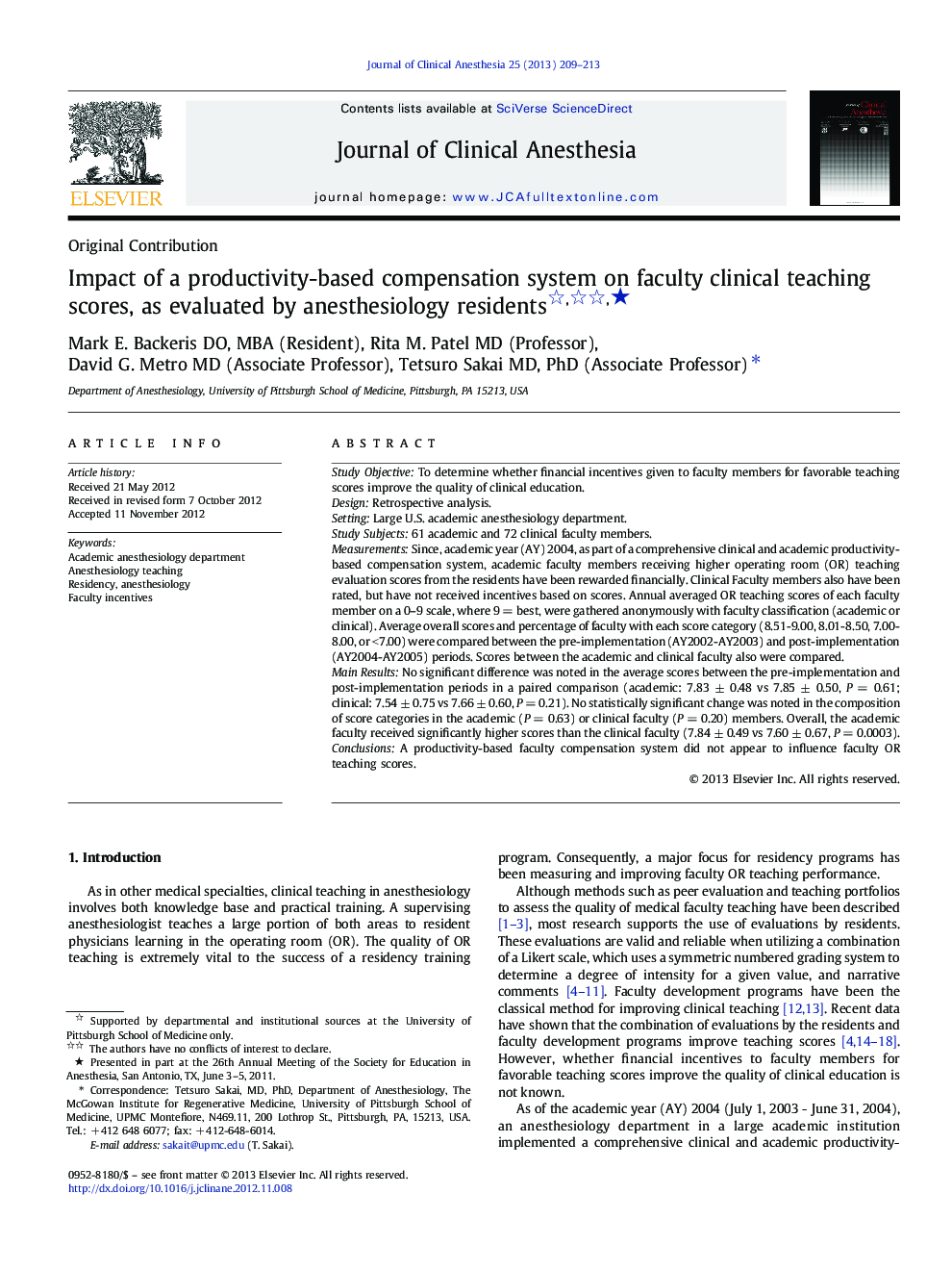| Article ID | Journal | Published Year | Pages | File Type |
|---|---|---|---|---|
| 2762883 | Journal of Clinical Anesthesia | 2013 | 5 Pages |
Study ObjectiveTo determine whether financial incentives given to faculty members for favorable teaching scores improve the quality of clinical education.DesignRetrospective analysis.SettingLarge U.S. academic anesthesiology department.Study Subjects61 academic and 72 clinical faculty members.MeasurementsSince, academic year (AY) 2004, as part of a comprehensive clinical and academic productivity-based compensation system, academic faculty members receiving higher operating room (OR) teaching evaluation scores from the residents have been rewarded financially. Clinical Faculty members also have been rated, but have not received incentives based on scores. Annual averaged OR teaching scores of each faculty member on a 0–9 scale, where 9 = best, were gathered anonymously with faculty classification (academic or clinical). Average overall scores and percentage of faculty with each score category (8.51-9.00, 8.01-8.50, 7.00-8.00, or <7.00) were compared between the pre-implementation (AY2002-AY2003) and post-implementation (AY2004-AY2005) periods. Scores between the academic and clinical faculty also were compared.Main ResultsNo significant difference was noted in the average scores between the pre-implementation and post-implementation periods in a paired comparison (academic: 7.83 ± 0.48 vs 7.85 ± 0.50, P = 0.61; clinical: 7.54 ± 0.75 vs 7.66 ± 0.60, P = 0.21). No statistically significant change was noted in the composition of score categories in the academic (P = 0.63) or clinical faculty (P = 0.20) members. Overall, the academic faculty received significantly higher scores than the clinical faculty (7.84 ± 0.49 vs 7.60 ± 0.67, P = 0.0003).ConclusionsA productivity-based faculty compensation system did not appear to influence faculty OR teaching scores.
